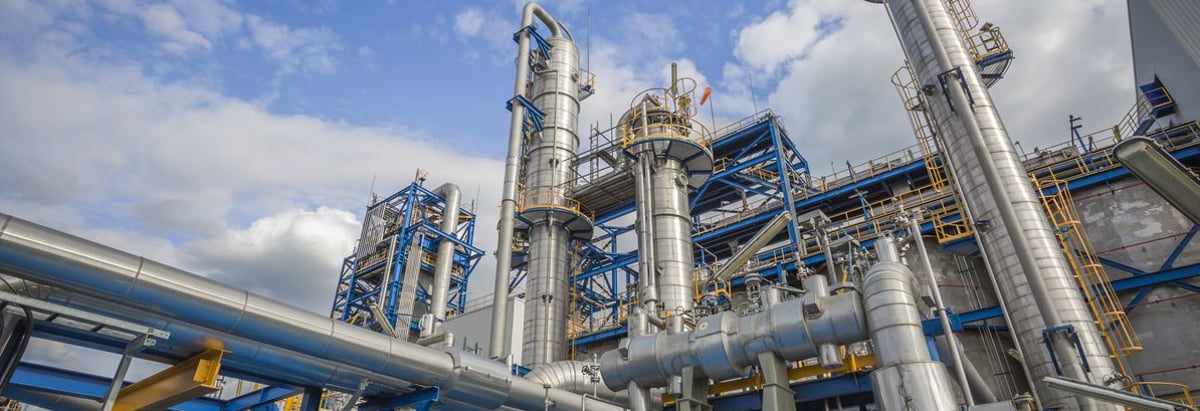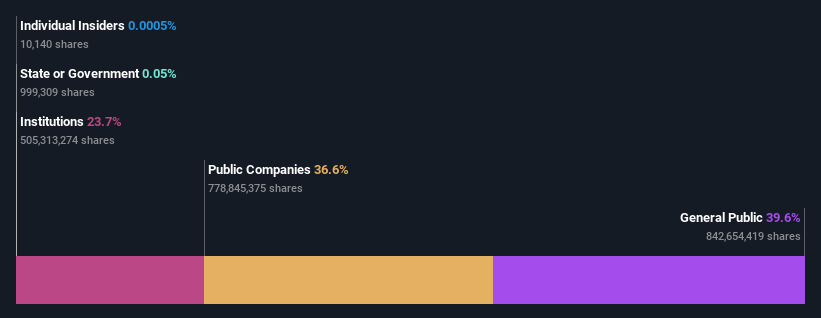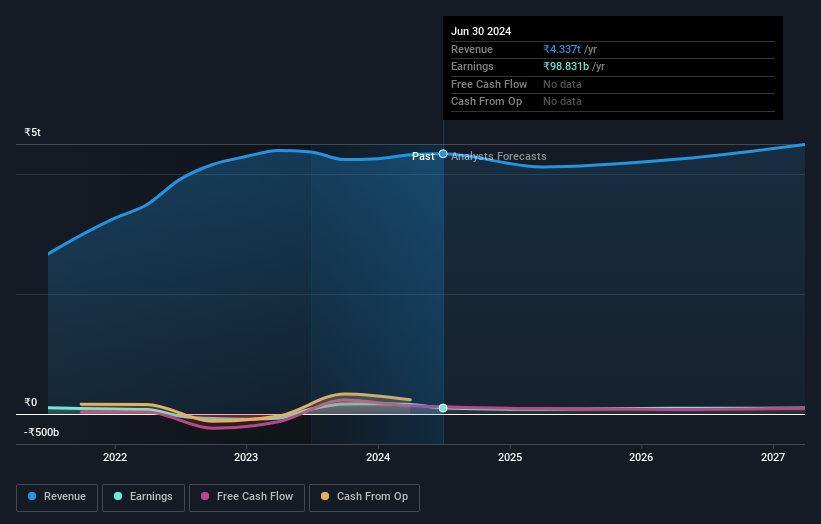- India
- /
- Oil and Gas
- /
- NSEI:HINDPETRO
Individual investors in Hindustan Petroleum Corporation Limited (NSE:HINDPETRO) are its biggest bettors, and their bets paid off as stock gained 6.8% last week

Key Insights
- Hindustan Petroleum's significant individual investors ownership suggests that the key decisions are influenced by shareholders from the larger public
- 51% of the business is held by the top 8 shareholders
- Institutions own 24% of Hindustan Petroleum
If you want to know who really controls Hindustan Petroleum Corporation Limited (NSE:HINDPETRO), then you'll have to look at the makeup of its share registry. With 40% stake, individual investors possess the maximum shares in the company. Put another way, the group faces the maximum upside potential (or downside risk).
As a result, individual investors were the biggest beneficiaries of last week’s 6.8% gain.
In the chart below, we zoom in on the different ownership groups of Hindustan Petroleum.
See our latest analysis for Hindustan Petroleum

What Does The Institutional Ownership Tell Us About Hindustan Petroleum?
Many institutions measure their performance against an index that approximates the local market. So they usually pay more attention to companies that are included in major indices.
As you can see, institutional investors have a fair amount of stake in Hindustan Petroleum. This implies the analysts working for those institutions have looked at the stock and they like it. But just like anyone else, they could be wrong. If multiple institutions change their view on a stock at the same time, you could see the share price drop fast. It's therefore worth looking at Hindustan Petroleum's earnings history below. Of course, the future is what really matters.

We note that hedge funds don't have a meaningful investment in Hindustan Petroleum. Oil and Natural Gas Corporation Limited is currently the company's largest shareholder with 37% of shares outstanding. In comparison, the second and third largest shareholders hold about 3.1% and 2.3% of the stock.
We also observed that the top 8 shareholders account for more than half of the share register, with a few smaller shareholders to balance the interests of the larger ones to a certain extent.
Researching institutional ownership is a good way to gauge and filter a stock's expected performance. The same can be achieved by studying analyst sentiments. Quite a few analysts cover the stock, so you could look into forecast growth quite easily.
Insider Ownership Of Hindustan Petroleum
The definition of an insider can differ slightly between different countries, but members of the board of directors always count. Management ultimately answers to the board. However, it is not uncommon for managers to be executive board members, especially if they are a founder or the CEO.
I generally consider insider ownership to be a good thing. However, on some occasions it makes it more difficult for other shareholders to hold the board accountable for decisions.
Our most recent data indicates that insiders own less than 1% of Hindustan Petroleum Corporation Limited. As it is a large company, we'd only expect insiders to own a small percentage of it. But it's worth noting that they own ₹3.9m worth of shares. In this sort of situation, it can be more interesting to see if those insiders have been buying or selling.
General Public Ownership
The general public, who are usually individual investors, hold a 40% stake in Hindustan Petroleum. While this size of ownership may not be enough to sway a policy decision in their favour, they can still make a collective impact on company policies.
Public Company Ownership
It appears to us that public companies own 37% of Hindustan Petroleum. We can't be certain but it is quite possible this is a strategic stake. The businesses may be similar, or work together.
Next Steps:
While it is well worth considering the different groups that own a company, there are other factors that are even more important. Case in point: We've spotted 2 warning signs for Hindustan Petroleum you should be aware of.
Ultimately the future is most important. You can access this free report on analyst forecasts for the company.
NB: Figures in this article are calculated using data from the last twelve months, which refer to the 12-month period ending on the last date of the month the financial statement is dated. This may not be consistent with full year annual report figures.
Valuation is complex, but we're here to simplify it.
Discover if Hindustan Petroleum might be undervalued or overvalued with our detailed analysis, featuring fair value estimates, potential risks, dividends, insider trades, and its financial condition.
Access Free AnalysisHave feedback on this article? Concerned about the content? Get in touch with us directly. Alternatively, email editorial-team (at) simplywallst.com.
This article by Simply Wall St is general in nature. We provide commentary based on historical data and analyst forecasts only using an unbiased methodology and our articles are not intended to be financial advice. It does not constitute a recommendation to buy or sell any stock, and does not take account of your objectives, or your financial situation. We aim to bring you long-term focused analysis driven by fundamental data. Note that our analysis may not factor in the latest price-sensitive company announcements or qualitative material. Simply Wall St has no position in any stocks mentioned.
About NSEI:HINDPETRO
Hindustan Petroleum
Engages in the refining and marketing of petroleum products in India and internationally.
Undervalued established dividend payer.
Similar Companies
Market Insights
Community Narratives



